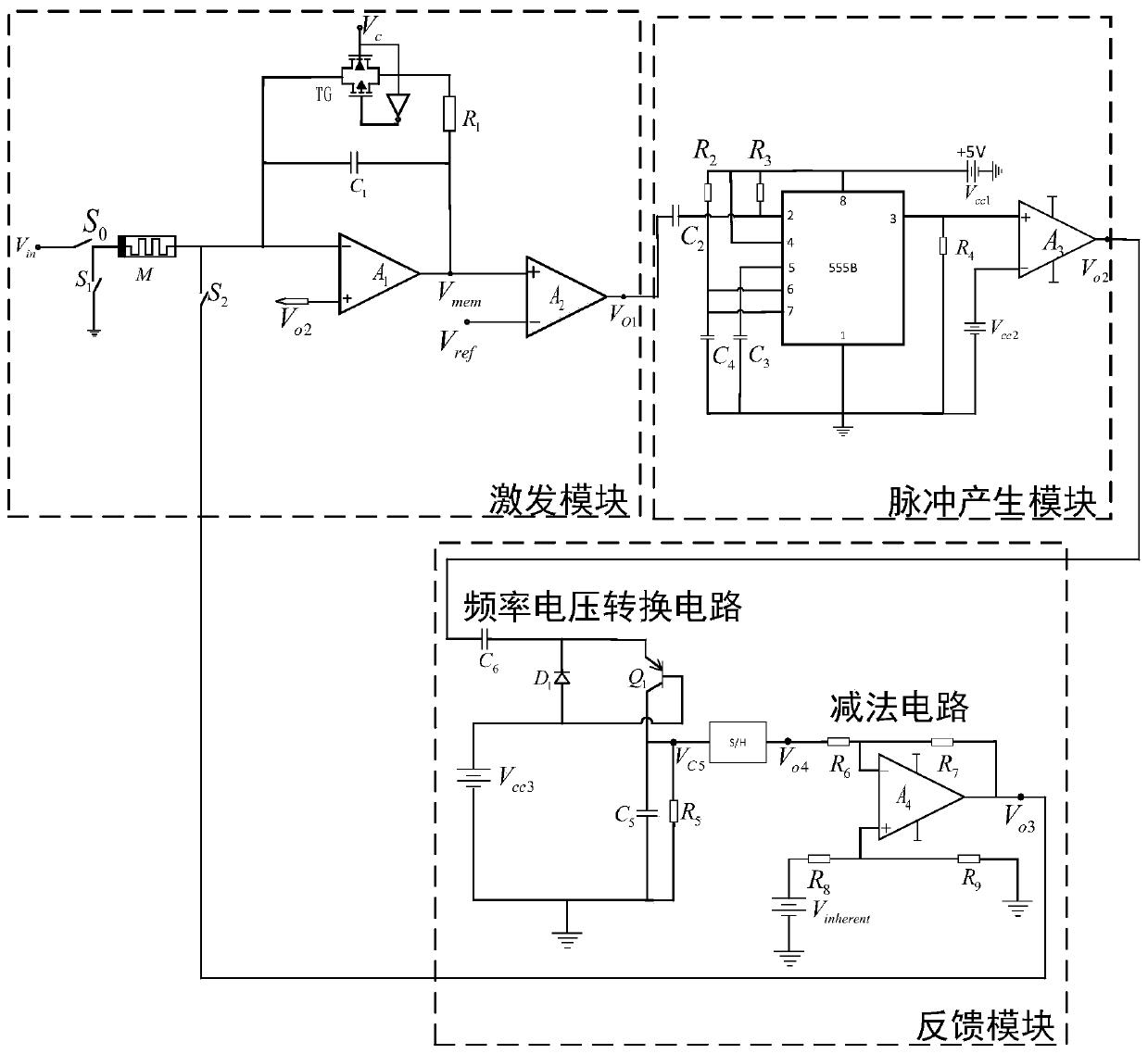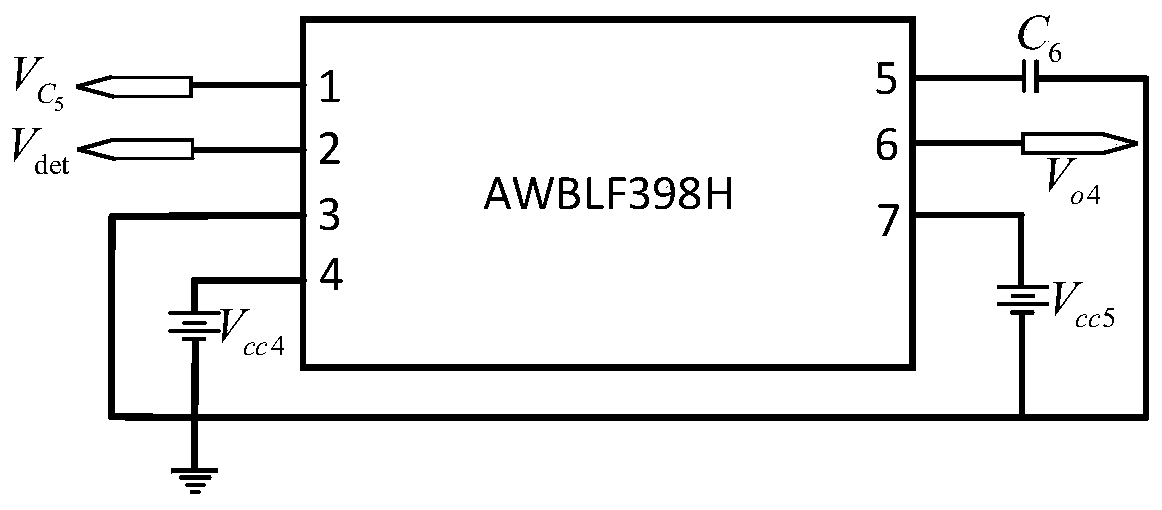A memristor-based neuronal circuit with homeostatic plasticity
A neuron and memristor technology, applied in the field of neuron circuits, can solve the problems of small size, slow operation speed, large size, etc., and achieve the effect of small size, easy integration and small size
- Summary
- Abstract
- Description
- Claims
- Application Information
AI Technical Summary
Problems solved by technology
Method used
Image
Examples
Embodiment Construction
[0018] In order to make the object, technical solution and advantages of the present invention clearer, the present invention will be further described in detail below in conjunction with the accompanying drawings and implementation examples. It should be understood that the specific implementation examples described here are only used to explain the present invention, and are not intended to limit the present invention. In addition, the technical features involved in the various embodiments of the present invention described below can be combined with each other as long as they do not constitute a conflict with each other.
[0019] The invention provides a neuron circuit with steady-state plasticity based on a memristor, including an excitation module, a pulse generation module, and a feedback module; the excitation module receives pulse signals generated by other neurons, and the excitation module contains a memory with a threshold Resistor, its resistance value represents t...
PUM
 Login to View More
Login to View More Abstract
Description
Claims
Application Information
 Login to View More
Login to View More - R&D
- Intellectual Property
- Life Sciences
- Materials
- Tech Scout
- Unparalleled Data Quality
- Higher Quality Content
- 60% Fewer Hallucinations
Browse by: Latest US Patents, China's latest patents, Technical Efficacy Thesaurus, Application Domain, Technology Topic, Popular Technical Reports.
© 2025 PatSnap. All rights reserved.Legal|Privacy policy|Modern Slavery Act Transparency Statement|Sitemap|About US| Contact US: help@patsnap.com



